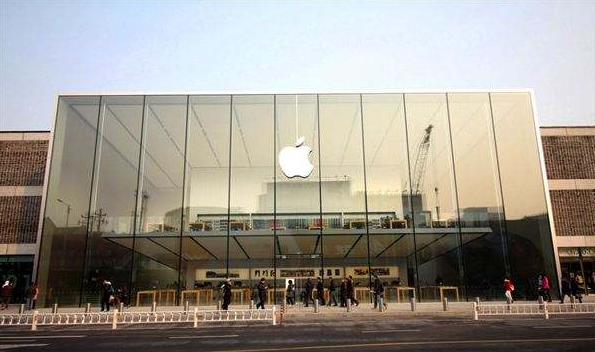Apple CEO Cook announced in the first quarter of his earnings report that the $1 billion foundation will be invested in US manufacturing. Recently, the investment of the first batch of 200 million US dollars spent on the American glass giant Corning.
Apple announced last weekend that the investment will be used for Corning's R&D, but did not disclose specific research and development projects. Apple said in a statement: "200 million US dollars will be used to support Corning's research and development, equipment requirements and advanced glass manufacturing processes." Previously, Apple and Corning have been working together for more than 10 years.
Investment bank Oppenheimer analyst Andrew Uerkwitz said that Apple's main purpose may be to promote the development of Apple's wireless charging technology and augmented reality AR glasses. Cook has expressed Apple's strong interest in the augmented reality market on several occasions and has formed a team to conduct research and development in this field.

Wireless charging technology has long been rumored, but Apple has not yet launched. Uerkwitz pointed out: "Metal will interfere with wireless charging technology, and Corning is a company that manufactures glass for the screen. As long as Apple uses glass to make the back of the phone, it can solve the problem of wireless charging." However, this also means iPhone. The cost will increase dramatically. It is widely expected that the price of the iPhone 8 flagship model to be released in the third quarter of this year will exceed $1,000. Uerkwitz expects Apple's investment to account for 5% of Corning's business.
Research firm MoorInsights analyst Patrick Moorhead believes that this investment is more inclined to cooperate with the two companies. Moorhead said: "Apple and Corning will work together to create a glass that can 'enlarge' the 180-degree augmented reality experience. Apple is developing an augmented reality glasses, which is likely to require a glass supplier." He further explained that the market is currently A big problem with existing AR devices is that they are too bulky and inconvenient to wear. The glass needed for future equipment must be very light, and Corning can develop this glass for Apple.
According to public data, Corning’s cash flow last year reached $2.5 billion, with an investment of $3.7 billion. Since July last year, Corning’s share price has doubled.
Apple's investment in Corning is considered to be a measure of the US government's policy of "creating US employment and returning manufacturing." Gartner analyst Sheng Linghai told the First Financial Reporter: "Corning's technology has almost no competitors in the industry. This kind of best-in-class thing makes everyone full of success." Sheng Linghai believes that in addition to R&D investment, both parties may still have Upfront investment in production capacity and other aspects.
Apple Chief Operating Officer Jeff Williams said the investment will be for Corning's plant in Harrodsburg, Kentucky. According to Corning, the funds will be able to sustain the production of 400 workers at the plant. It is expected that the cooperation between the two sides is expected to create 1,000 jobs in the future.
Corning's most famous product is the "Gorilla Glass" that Apple uses on the iPhone. This is a very hard and wear-resistant glass. When the two companies cooperate, it is expected to develop a more powerful "gorilla glass".
Since the release of the first generation of Gorilla Glass in 2010, Corning has been updating iterations almost every year, and its performance is quite close to that of “sapphire glassâ€, which can effectively prevent screen scratches. Previously, there were rumors that Apple would use sapphire glass as a supplier, and domestic mobile phones such as vivo, Huawei and Meizu also began to adopt the sapphire screen as the latest selling point.
Although sapphire has a higher hardness, it is difficult to produce such a glass, and the cost is high, and the yield is not guaranteed. In contrast, Corning's patented "Gorilla Glass" process is more mature, and "Gorilla Glass" is also known as "Chemical Tempered Glass." This technology is relatively new and is still considered to be ultra-thin under 3 mm. The only way to tempered glass.
However, the performance of Corning's latest generation of "gorilla glass" is approaching the performance limits that this technology can achieve, and the possibility of performance improvement is relatively small. After Apple invests in Corning, the two sides are likely to make new breakthroughs in technology. TImBajarin, an analyst at consulting firm CreaTIveStrategies, told the First Financial Reporter: "The cooperation between Apple and Corning may break the traditional supply chain model and create unexpected products."
Corning did not respond to CBN by how Corning would significantly improve the performance of its glass products. According to sources close to Corning, Corning has been more traditional. If you want to turn to other types of glass manufacturing technology, I am afraid to be very cautious. Moreover, the cost of technology shifts is high and the risks are high. For a traditional enterprise that has already been in the leading position in the industry, it needs to be evaluated very carefully.
In Corning's view, the most destructive of the screen is not wear and tear, but the broken after falling. From the actual use situation, Corning researchers found that the smart phone dropped, the screen directly with the surface of the concrete and other hard contact, is the most vulnerable to damage to the phone. Therefore, the main function of the current "Gorilla Glass" is "anti-fall".
Apple’s investment in Corning is also the fourth major investment Washington has received this year. In January, Amazon announced a $1.4 billion investment in a global cargo port in northern Kentucky. Toyota has also announced an investment of $1.3 billion to produce the flagship Camry in Georgetown.
Langrui Energy (Shenzhen) Co.,Ltd , https://www.langruibattery.com